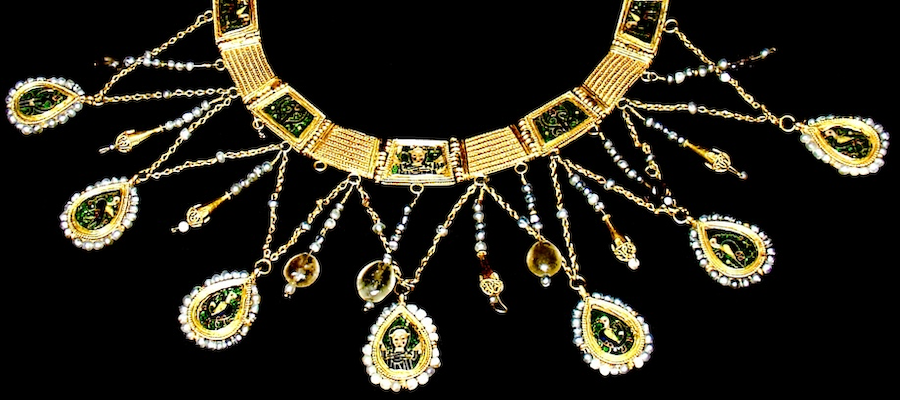Participants
Antje Bosselmann-Ruickbie (Justus Liebig University Giessen)
Co-organizer and panelist
Byzantine, Ottonian, and Fatimid Enamels of the Tenth and Eleventh Centuries: Technological Innovation and Artistic Competition
In the Byzantine Empire, the 10th and 11th centuries were a heyday of art production, and of the art of enamelling in particular. Examples of high-quality enamel works are the large ‘Limburg Staurotheke’ (Germany), the jewellery of the Preslav Treasure (Bulgaria), the Monomachos Crown and the Crown of St Stephen (both Hungary). In the West, various patrons in the Ottonian Empire likewise commissioned masterpieces of enamels. The workshop of Archbishop Egbert of Trier (977-993), Germany, is the best-documented enamel workshop that created technically and semantically sophisticated objects, such as the portable altar of St Andrew in Trier’s Cathedral Treasure. The comparison of enamel production in Byzantium and the West throws a light on the mutual exchange of aesthetics, technology and know-how, and also allows conclusions to be drawn on aspects of artistic competition in a time when the two realms were political adversaries over the succession of the Roman Empire. While research has dealt comparatively intensively with the development of enamel in Byzantium and the West, the Fatimid Empire’s role in this has not been fathomed. With the first Fatimid enamels dated to the end of the 10th century, the question arises of where the artist’s inspiration came from and how and when Fatimid enamel developed. Some examples can shed light on the cross-cultural fertilization in this particular genre of art, such as Byzantine enameled earrings with Arabic inscriptions, which were probably diplomatic gifts for an Arab Emir on Crete, Byzantine enamel spolia in Fatimid earrings and Fatimid translucent-green ceramics, perhaps reflecting early attempts to reproduce the effect of Byzantine enamels. Particularly interesting for this topic are technological innovations and developments to investigate pathways, contact zones and timing of cross-cultural exchange over political, linguistic and confessional borders.
Susanne Greiff (University of Tübingen)
Same but Different? Byzantine and Central European Enamels in the Light of Physico-Chemical Limitations
Based on scientific studies on material from Central and Eastern Europe, the paper will review physical and chemical parameters that limit enamel production and enamelling procedures in the Medieval period, setting boundaries to artistic freedom and creativity. This aspect is often neglected when discussing the potential extent of variability and difference between enamels from different periods and regions.
The study includes outstanding pieces of art such as enamels from the Byzantine treasure from Preslav (Bulgaria) or the Carolingian portable Altar from Adelhausen, a monastery close to Freiburg (Germany), but will also consider smaller archaeological finds, such as fibulae, thus addressing overarching questions of quality of workmanship and materiality. It will also be investigated how written sources add to these observations, such as Theophilus’ "On divers Arts" or the Greek-Byzantine treatise "On the Highly Appreciated and Famous Art of the Goldsmith" that is published within the Codex Parisinus graecus 2327.
Franz Kirchweger (Kunsthistorisches Museum Vienna)
The Imperial Crown in Vienna and Its Enamels
The Imperial Crown is set with four large cloisonné enamels that are most remarkable in the Western cultural context of the 10th and 11th centuries, with regard to their size, shape, technique and iconographical program. They are in the technique of "sunk" enamel (Senkschmelz) that was invented in 10th-century Byzantium. Details of the depicted costumes also bear witness of Byzantine influence. The paper will look at the enamels from a cross-cultural perspective and discuss implications on the questions of dating and localization, still under debate.
Shannon Steiner (Independent Scholar)
Co-organizer and presider
